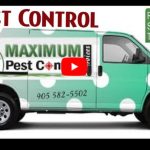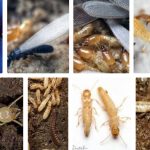
Natural Ways to Get Rid of Ants for Good
Ants are one of the most common and persistent household pests. These invasive tiny creatures contaminate foods and cause significant structural damage to homes and businesses. Although they don’t eat wood, some ant species are well-known for hallowing out wood and creating extensive galleries that compromise the structural integrity of your home.
With more than 100 ant species in Canada, most homeowners encounter these pests in or around their homes at one point. Yet, no property owner wants to share their homes with these damaging creatures. The good news is that our ant pest control service professionals at Maximum Pest Control Services have been successfully controlling ants in Canadian homes for many decades. Our Ant Control Solutions combine effective methods and safe products to achieve total control of ant invasions and prevent re-infestations as claimed by our customers.
This comprehensive guide includes the most effective and safe tips on how to get rid of ants for good, according to best ant control service trained professionals.
What Types of Ants Invade Homes?
Accurately identifying the ant species type invading your property is imperative to effective control. As mentioned earlier, there are over 100 ant species in Canada. Generally, most of these species are relatively harmless and even beneficial in controlling pests such as moths. However, some ant species have become a problem for property owners by setting up nests in homes, damaging structures, contaminating foods, and spreading diseases.
Here are the ant species Canadian homeowners are most likely to encounter in their houses and gardens.
Carpenter Ants
There are two types of carpenter ants that can invade homes in Canada; red and black carpenter ants. While black carpenter ants have a solid black colour all over their bodies, red carpenter ants are black but with a reddish brown upper body. Carpenter ants are often confused with termites thanks to their large sizes, often measuring between 6-25mm long. One distinguishing factor between carpenter ants and termites is their slim waist and bent antennae, unlike termites’ thick waists with straight antennae. These destructive ants don’t eat wood, but they build their nests in damp or decaying wood, causing severe structural damage in time.
Fire Ants
Are not common in urban areas. But they tend to attack homes in the rural areas of Canada. Though they are relatively small (2-5mm long), these aggressive little pests cause extremely painful bites and stings to humans or animals that get too close to their dome-shaped nests. They are easily identifiable by their dull reddish-brown colour and back stinger. They sting multiple times, injecting venom into the skin and leaving you with painful, intensely itchy welts that eventually turn into itchy blisters.
Pavement Ants
Though pavement ants are not native to Canada, they have become well-established and can be found throughout the country. These ants are a major pest in Ontario and are often found nesting near driveways and sidewalks. Also known as sugar ants, pavement ants measure about 2mm in length and are characterized by pale brown or black bodies. Also have a stinger, but unlike fire ants, they don’t use their stingers to attack. Instead, the stinger leaves a pheromone trail when communicating with other ants. You’re likely to see them outside the walls of your home, on patios, in garages, or under your front door, marching towards your kitchen area.
5 Effective Home Remedies to Get Rid of Ants in Your Home or Business
Professional ant control service is considered the most effective way to get rid of ants in your home. However, there are many natural and effective ways to eliminate and repel an ant colony. These chemical free methods are the ideal choice for those who prefer to eradicate pests without adding toxic chemicals to the environment:
Diatomaceous Earth Powder
Diatomaceous earth (DE) or silicon dioxide is one of the best ways to kill and repel naturally. DE is a fine powder obtained from naturally occurring siliceous sedimentary rocks found in water bodies. While it is not toxic, DE kills insects fast by absorbing their oils and fats via the exoskeleton, dehydrating the pests to death. This product continuously kills them as long as it is kept dry and undisturbed. You can buy food-grade diatomaceous earth online and sprinkle the fine powder on ant trails, ant hills, and other places you may have spotted the pests for effective control.
Boric Acid
Boric acid is a compound consisting of boron, hydrogen, and oxygen. Often used as an additive in cosmetics, toothpaste, lotions, and soaps, boric acid can kill invasive pests such as ants, roaches, and also termites. When consumed, boric acid acts as a poison, disrupting an insect’s stomach and central nervous system and eventually causing death. Boric acid is also abrasive and can damage an insect’s exoskeleton, causing them to dry out.
Essential Oils Repellent
Multiple essential oils can act as a natural ant repellent. For instance, peppermint, lavender, eucalyptus, and lemongrass oils have been used to deter them and other bugs from homes and businesses effectively. Not only do these oils eliminate them, but they also keep your home smelling fresh. Here is a step-by-step guide on how to use essential oils to get rid of ants:
- Mix a few drops of essential oil with two cups of pure water in a plastic spray bottle.
- Spray the solution in ant-infested areas, including baseboards, doors, and windows.
- Allow the solution to dry completely and re-apply as needed to eliminate bugs.
Glass Cleaner and Household Detergents
Liquid detergents can go a long way in keeping your home pest free. They communicate by leaving a pheromone trail in the places they walk. This allows other colony members to follow the trail in a line of marching ants toward a specific food source in your home. You can use your household detergents to remove the scented trail and stop ants from invading your home. For the best results, use your detergent as follows:
- Add a small amount of liquid detergent and glass cleaner spray into a plastic spray bottle.
- Spray the solution on ant-infested areas and places where ants seem to come inside, such as holes, cracks, and walls.
- Wipe down any excess solutions, leaving behind a light residue
- Repeat the treatment as needed to eliminate the pests.
Baking Soda
Also known as borax, baking soda can help you get rid of ants and the blood sucking bedbugs effectively. In fact, ants know to avoid any area with pure baking soda. This compound is abrasive and sharp enough to cut into an ant’s body, causing severe injury and eventual death. When ingested, baking soda also creates carbon dioxide bubbles that kill the bugs. For effective results, sprinkle baking soda in areas you’ve spotted ant activity, including cabinets and under the sink.
When to Engage the Pros – Contact Maximum Today!
Ants live in extensive colonies, each consisting of thousands of individuals. Their sheer number makes it difficult to control the pests successfully without the help of an experienced professional. Call Maximum Pest Control Services (905) 582-5502 if you looking for ant control service and to inspect your home and business place. We will identify the ant species causing you trouble and exterminate them completely while reducing the chances of a re-infestation again as we have worked with many happy customers with years of experience in all types of pests; bedbugs, mice, rats, spiders, centipedes, wasps. Our certified insured and bonded university exterminators are trained professionals to help conquer your all types of pests issues fast. Contact Us Now!



